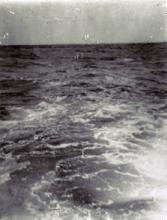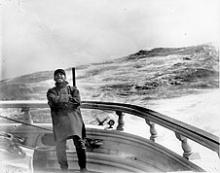Conclusion
Life at sea was hard, with few amenities. A seamanSeaman
A sailor or mariner. Any person employed or engaged aboard ship, with the exception of the master, pilot, or apprentice. never got more than about three and a half hours of sleep at a time, and the work could be dangerous and unpleasant. Crew, captainsCaptain
The chief officer in charge of all aspects of a vessel. Also known as the master., and matesMate
In the merchant marine, the rank below master. Mates may be first, second, third, etc. might or might not get along well. Everyone who went to sea experienced both its romance and its hardships; yet, once at home it was easy to look back on the great days aboard ship.
A century or more ago, jobs were readily available on the schoonersSchooner
A sailing vessel of two or more masts, all fore-and-aft rigged. The Thomas W. Lawson, built in 1902, had seven masts. In comparison to a square-rigged vessel of comparable tonnage, a schooner is better for coastwise sailing. — the tractor-trailer trucks of the day — sailing up and down the East Coast, or on the hundreds of merchant vessels crossing the world’s oceans. Vessels moved the products of farms, factories, quarries, mines, mills, and the sea.
Today, we still depend on ships for many goods. A large modern container ship operated by approximately twenty-four crew members carries as much cargo as fifty Down EastersDown Easter downeaster; down-easter
Merchant sailing ship developed in Maine in the 19th century and designed for maximum carrying capacity with minimal crew size.
Read more did, in a fraction of the time, with many conveniences on board. Life at sea still has its perils and hardships, but it is very different from the days of Maine’s sailing ships.


